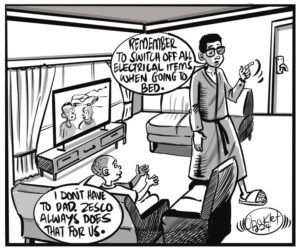PARLIAMENT has launched the first edition of the Parliamentary Publication on Members of the Legislative Council and Members of Parliament, 1924 to 2021.
Speaking during the launch, Speaker of the National Assembly, Dr Patrick Matibini said the document contained information of members of Legislative Council who served from 1924 to 1964 and MPs who had served the National Assembly of Zambia from 1964 to date.
“I am very pleased to address you this morning as we celebrate the launch of the first edition of this historic publication entitled: ‘Members of the Northern Rhodesia Legislative Council, and the National Assembly of Zambia, 1924 – 2021′.This is indeed an extraordinary document that is appearing for the first time. It is historic and unprecedented, because it contains information of members of the Legislative Council (LEGICO), who served from 1924 to 1964, as well as members of parliament who have served the National Assembly of Zambia from 1964 to-date,” Dr Matibini said.
“You may also wish to note that since the 9th Parliament, that is, the 2001 to 2006 Parliament, efforts have been made to produce public parliamentary handbooks which contain biographical information of MPs. However, no single document covering the membership of LEGICO and NAZ has ever been produced since 1924. It is for this reason that the NAZ embarked on this stupendous task to compile a more comprehensive compendium of record of all Members; covering both the pre- and post- independence eras.”
Dr Matibini said the publication would serve as a quick reference resource for stakeholders who wished to fact check information about their MPs and the institution.
“At this juncture, allow me to highlight some of the salient contents of the publication we are launching this morning. These include: (i) brief profiles of members of the LEGICO and NAZ, both elected and nominated; (ii) year of establishment of some of the constituencies, and their evolution over the years; (iii) government portfolios held by members of the LEGICO and NAZ during their tenure; (iv) political parties under which members have served; (v) presiding Officers; and (vi) an appendix containing information on sessions from 1964 to 2021, including of course by-elections,” Dr Matibini said.
“I have no doubt in my mind that the information provided in this Handbook will be useful to the public, in appreciating the evolution of the constituencies. I also believe that the publication will serve as a quick reference resource for stakeholders who wish to fact-check some information about MPs and the Institution. It is no doubt also a valuable tool for research and educational purposes, for generations to come. It is, therefore, my sincere hope that Civil Society Organisations (CSOs), Faith Based Organisations (FBOs), researchers, families and societies, within and outside the country, will find this publication both informative and useful. The relevance and importance of this Handbook cannot be overemphasised. This is a legacy bequeathed not only to Parliament, but also the entire citizenry of our country. Therefore, on behalf of the National Assembly of Zambia, and indeed on my own behalf, allow me to express my heartfelt gratitude to all those who assisted our researchers during the compilation of this compendium.”
Meanwhile Clerk of the National Assembly Cecilia Mbewe said the compilation process of the publication started almost two years ago.
“Allow me at this juncture, to state that I am very glad that today, we are finally launching this publication, whose process of compilation started almost two years ago. Even though the process was long and tedious, it was both a fulfilling and necessary experience. As you can see, this is such a voluminous and detailed document, a testament to the mammoth work that went into compiling it. Allow me to briefly talk you through the process involved in the compilation of this publication. From inception, the process involved pulling our ideas together, extensively researching on the format and asking ourselves what we wanted to include in the document, until the framework fell into place. It should be noted that a lot of thinking went into arriving at the framework, with earlier formats focusing on profiling individual parliamentarians. The constituency-based framework that the document finally took was considered to be more informative and user friendly to navigate,” Mbewe said.
“Sir, the next step in the compilation process involved researching and collecting details, as well as identifying and matching photographs of individual parliamentarians. Cognisant of the available wealth of information within Parliament, we heavily relied and drew upon our own archives, especially the parliamentary debates, before launching the search outside the Institution. Similarly, we utilised constituency offices across all the 10 provinces of our country, to collect and augment some of the information.”












